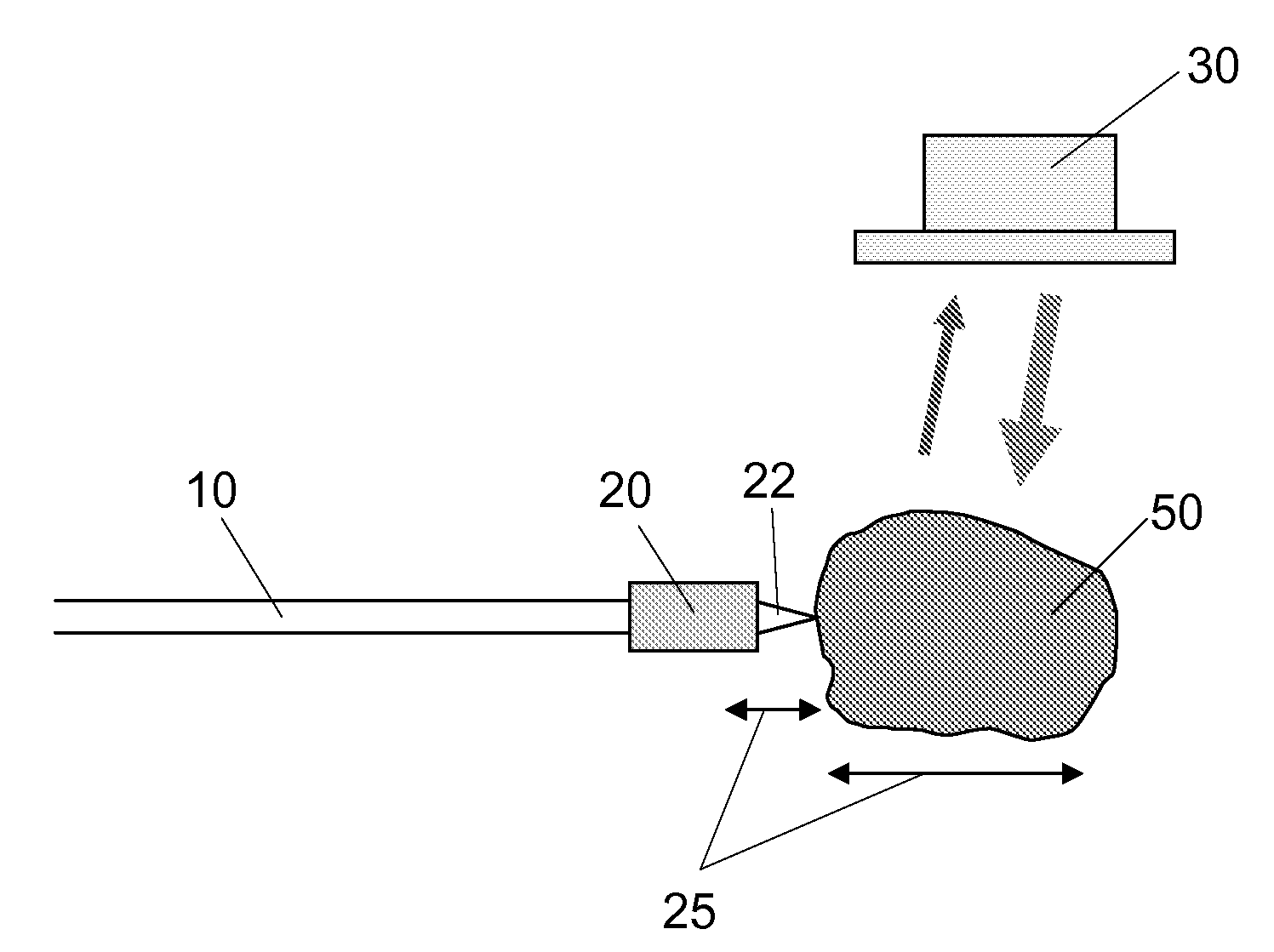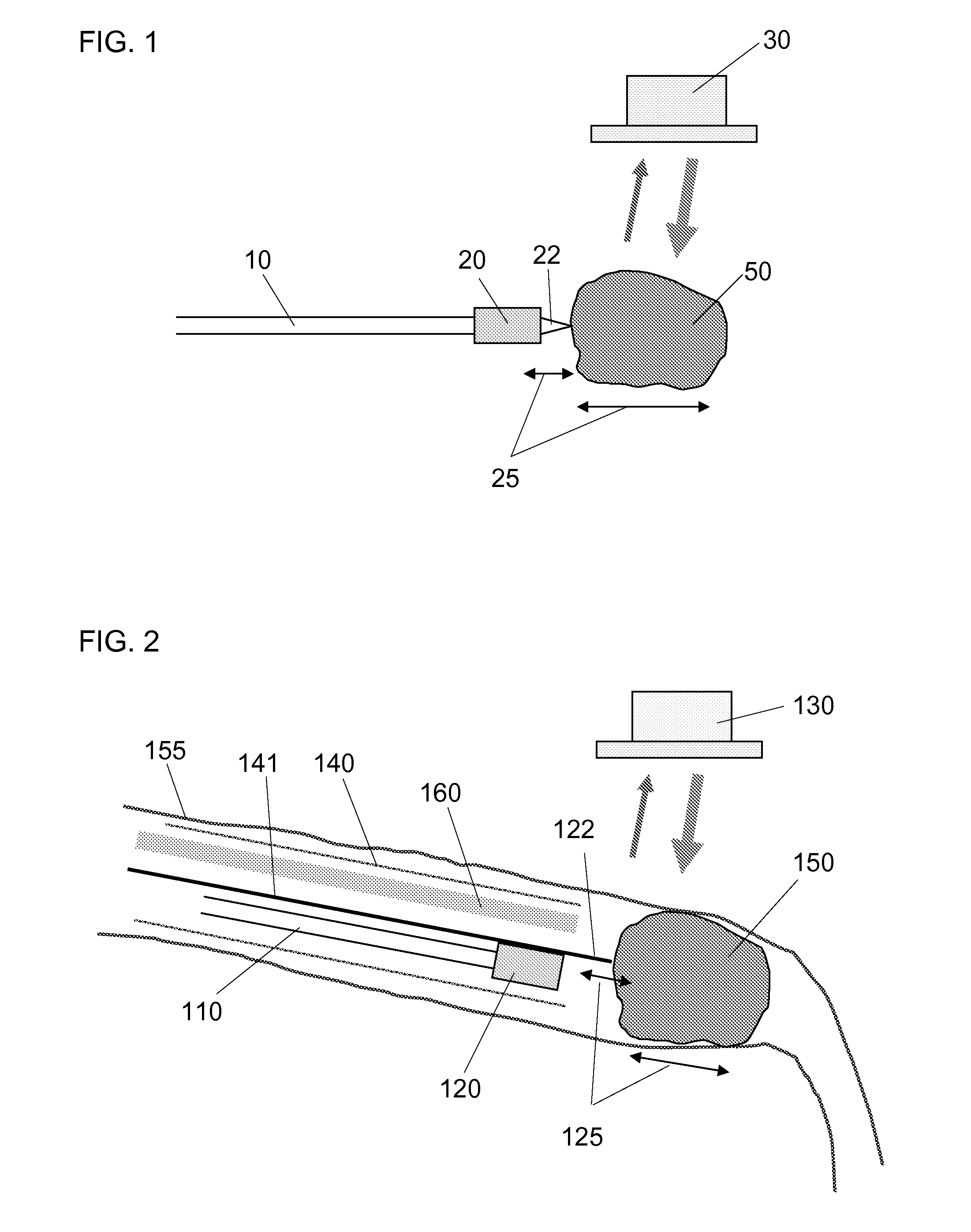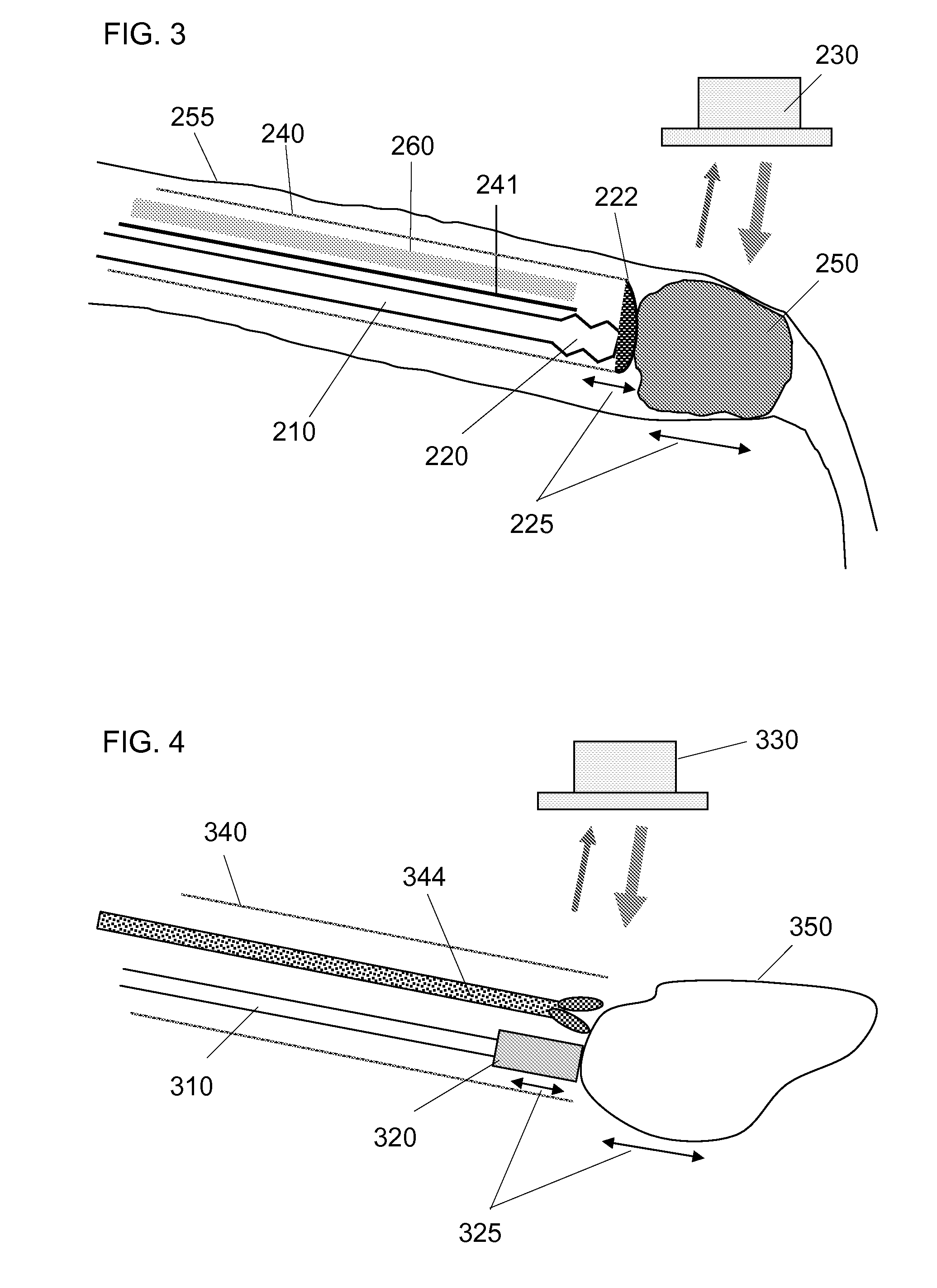Method and device for recognizing tissue structure using doppler effect
a tissue structure and doppler effect technology, applied in the field of tissue structure recognition using doppler effect, can solve the problems of limited use, inability of treating physicians to use dedicated devices, wires, catheters, etc., and consequent absence of contrast materials, etc., to direct the invasive tool through the occlusion
- Summary
- Abstract
- Description
- Claims
- Application Information
AI Technical Summary
Benefits of technology
Problems solved by technology
Method used
Image
Examples
Embodiment Construction
[0020]The present invention is directed to an apparatus, method and system for visualizing the distal end of an interventional device and the organ or lesion that is the target of the interventional device. The apparatus of the invention comprises an imaging tool for use with an ultrasound imaging apparatus. The imaging tool comprises a vibratory transducer and a vibratable element. The vibratory transducer is capable of generating vibrational energy to effect a vibration motion in the vibratable element at first imaging frequency of about 2 Hz to about 2 kHz (a low frequency), hereinafter also referred to as simply a first frequency. The vibratable element is capable of causing a target organ to oscillate at a second imaging frequency of about 2 Hz to about 2 kHz (a low frequency), with an amplitude of less than about 2 mm peak to peak (hereinafter referred to as a small amplitude), such that the operator can introduce the imaging tool into a body tissue or lumen in need of treatme...
PUM
 Login to View More
Login to View More Abstract
Description
Claims
Application Information
 Login to View More
Login to View More - R&D
- Intellectual Property
- Life Sciences
- Materials
- Tech Scout
- Unparalleled Data Quality
- Higher Quality Content
- 60% Fewer Hallucinations
Browse by: Latest US Patents, China's latest patents, Technical Efficacy Thesaurus, Application Domain, Technology Topic, Popular Technical Reports.
© 2025 PatSnap. All rights reserved.Legal|Privacy policy|Modern Slavery Act Transparency Statement|Sitemap|About US| Contact US: help@patsnap.com



